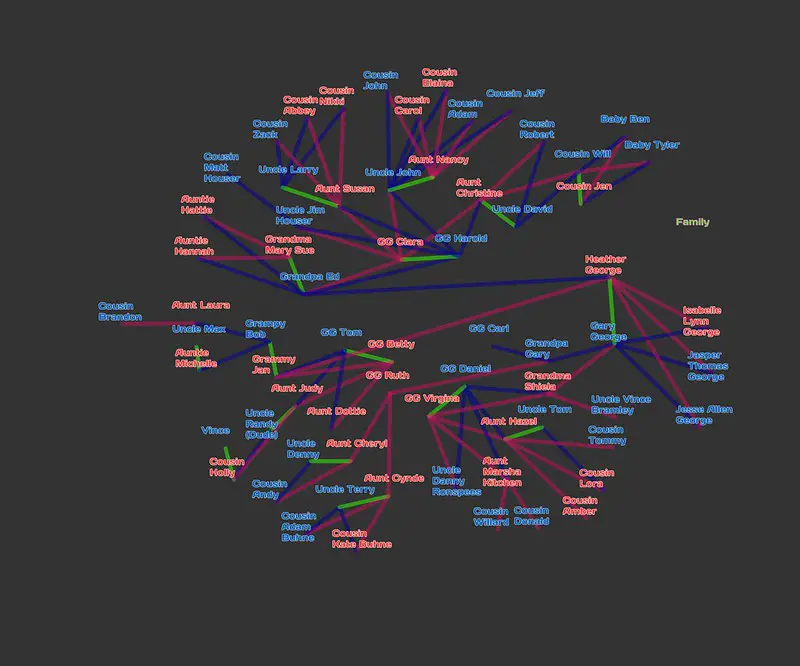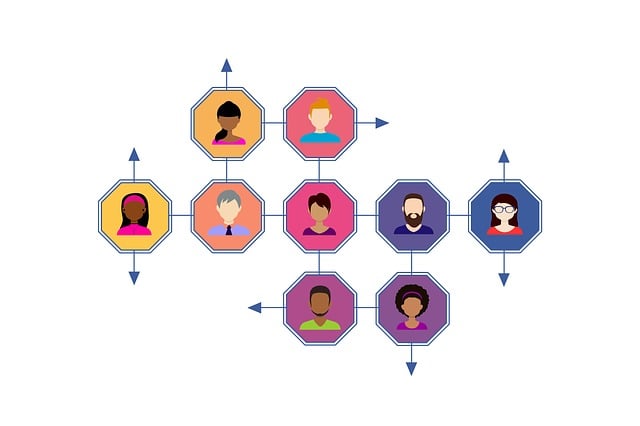Kinship analysis and social network analysis are both valuable research tools used to analyze the relationships between individuals and groups. While kinship analysis is focused on exploring family lineages, social network analysis looks at how people interact in their personal and professional networks. Both of these techniques provide insights into group dynamics that can be used to inform decision-making or develop strategies for change.
Kinship analysis
(Photo by Family Art Studio on Flickr)

Kinship analysis is the study of family relationships and how they are formed. It looks at how these relationships change over time and how they are affected by various factors such as marriage, divorce, and death. Social network analysis is the study of social interactions and how they are related to each other. It looks at how these interactions affect the overall structure of a society.
Social network analysis
(Image by congerdesign from Pixabay )

Social network analysis (SNA) is a method of studying relationships among individuals or groups by mapping and analyzing their social connections. It is based on the idea that social relationships can be visualized as networks of nodes (individuals or groups) connected by ties (relationships or interactions). By examining these networks, social network analysis can reveal patterns of communication, information flow, influence, and other social dynamics.
Social network analysis can be used in a variety of fields, including sociology, anthropology, business, marketing, political science, public health, and more.
Kinship analysis Vs. Social network analysis – Key differences
Kinship analysis and social network analysis are two different approaches to understanding relationships among individuals or groups. Here are some key differences:
Focus: Kinship analysis focuses specifically on family relationships and the roles and obligations that are associated with them, while social network analysis examines relationships more broadly, including social, professional, and other types of connections.
Types of data: Kinship analysis relies heavily on genealogical data, such as family trees and birth and marriage records, to understand family relationships. Social network analysis, on the other hand, can use a wide range of data sources, such as surveys, online activity, and communication patterns, to map social connections.
Methods: Kinship analysis often uses qualitative methods, such as interviews and participant observation, to understand the social and cultural context of family relationships. Social network analysis, on the other hand, typically uses quantitative methods, such as statistical analysis and network visualization, to identify patterns and relationships within a social network.
Units of analysis: Kinship analysis focuses on the individual and their relationships within a family or kinship group, while social network analysis often focuses on the relationships between groups or organizations.
Applications: Kinship analysis is often used in anthropology and sociology to understand family structures and dynamics in different cultures. Social network analysis is used in a wide range of fields, including business, marketing, public health, and political science, to understand social connections and how they influence behavior and outcomes.
While both kinship analysis and social network analysis are concerned with relationships among individuals, they differ in their focus, data sources, methods, units of analysis, and applications.
How to choose the right method for your research
There are a few key considerations to take into account when deciding whether kinship analysis or social network analysis (SNA) would be more appropriate for your research. First, think about what type of data you have and whether it is more likely to lend itself to one method or the other. For example, if you have very detailed information on family relationships, then kinship analysis would probably be a better fit. On the other hand, if you have data on people’s interactions with each other, then SNA would likely be a better method.
Another key consideration is what type of questions you want to answer with your research. Kinship analysis is typically better suited for answering questions about family relationships and social structure, while SNA is better suited for answering questions about how information flows through a social network.
Finally, keep in mind that both methods have their strengths and weaknesses, so it’s important to choose the right one for your particular research needs. If you’re not sure which method would be best for your project, consult with a qualified researcher who can help you make the decision.
What are the different types of kinship network?
There are different types of kinship networks that can be used to study relationships between individuals. These include:
- Kinship diagrams: A kinship diagram is a visual representation of the relationships between individuals in a kinship network. It can be used to identify patterns and trends in the data.
- Kinship coefficients: Kinship coefficients are numerical values that represent the strength of the relationships between individuals in a kinship network. They can be used to compare different kinship networks, or to identify patterns and trends within a single kinship network.
- Social network analysis: Social network analysis is a technique that can be used to study the structure of kinship networks. It can be used to identify patterns and trends in the data, or to compare different kinship networks.
What is a social network analysis in anthropology?
A social network analysis in anthropology is the study of relationships between individuals, groups, and organizations. It can be used to examine patterns of social interaction, identify social roles and status, and understand power dynamics. Social network analysis can also be used to study how information flows through a community, and how social change occurs.
What is the importance of kinship networks?
Kinship networks play an important role in many societies, providing a way for people to connect with others who share a common ancestor. In some cases, these networks can be used to trace ancestry and family history. In others, they may provide opportunities for social and economic cooperation. Still, in others, they may serve as a way to resolve conflict or disputes.
What are the methods of kinship analysis?
There are two main methods of kinship analysis: The genealogical method and The anthropological method.
The genealogical method traces relationships through family trees. This can be done by looking at birth, marriage, and death records, or by interviewing family members.
The anthropological method looks at patterns of behavior, such as marriage and residence patterns, to determine kinship. This approach is often used in cultures where people do not have access to family records.
What are the two types of kinship studies?
There are two main types of kinship studies: Consanguineous and Affinal.
Consanguineous kinship studies trace relationships through blood, while Affinal kinship studies trace relationships through marriage or adoption.
Both consanguineous and affinal kinship studies have their benefits and drawbacks. Consanguineous kinship studies are more likely to identify close relatives, but they can be biased by incestuous relationships. Affinal kinship studies are less likely to identify close relatives, but they are not biased by incestuous relationships.
Set featured image
Featured Image By – Gerd Altmann from Pixabay








